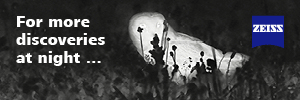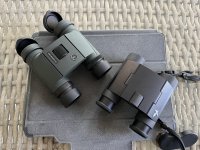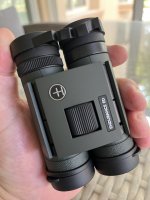Hi
I’m after the same thing you are. A pocket bino for hiking, climbing, cayaking and traveling. And I also live in Sweden (so I know about the struggle looking for used Big 3.)
I bought a Kowa SV II 8x25 a week ago and although I like the optics, the robustness and the “feel”, the decent FOV and the price, I will return it because of nausea I haven’t felt when using other binos. I am by no means an expert and can only compare the bino to a Zeiss VP that I returned due to it being bigger than I thought.
I’m thinking about purchasing a Trinovid (although I’m worried about the non waterproofness - anyone who can pitch in on this? - and price.) The other option is a Opticron 8x24 Traveller but can’t seem to find any reviews about this binocular. The specs look amazing and the size seem perfect. However, I don’t know much about the brand.
Have you looked at the Opticron Traveller or the Opticron Aspheric 3 8x25?









